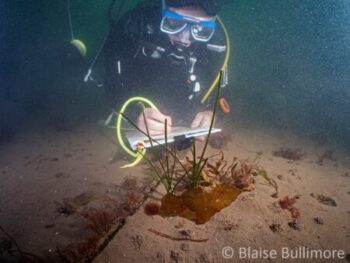Seagrasses, mangrove forests, and coastal wetlands store vast amounts of carbon, and their preservation and restoration hold great potential to bank CO2 and keep it out of the atmosphere. But can the blue carbon market avoid the pitfalls that have plagued land-based efforts?
In the shallow waters off the shores of Virginia, vast meadows of seagrass have been recreated over the past two decades by conservation scientists who have spread more than 70 million seeds, restoring 3,600 hectares of an ecosystem devastated by disease in the 1930s. The work has brought back eelgrass (Zostera marina) — a keystone species that supports crustaceans, fish, and scallops, and is now absorbing the equivalent of nearly half a metric ton of CO2 per hectare per year.
Now, the Virginia Nature Conservancy is aiming to turn those tons into carbon credits that it can sell for cash. Click here.
The article goes on to point out that “The carbon market in general has a chequered past (Carbon offsets offer a fantasy of capitalism without crises).
Nevertheless, the rise in monetisation of carbon sequestration through trading in blue carbon credits is becoming increasingly emphasised as another natural sink that can be exploited as a market mechanism (Ocean-based sequestration heats up). Perhaps unfortunately, the example selected in this article is that of growing kelp and sinking the crop in the deep ocean. Maybe it will work well, but kelp does have a nasty habit of washing up on shores, being eaten or pulverised and its carbon returned to the water column; available data is currently too sparse to determine where the balance between kelp being a carbon source or sink.
The author does remind us that for carbon credits to be traded on carbon markets, an established certification body needs to sign off on the process used to store the carbon. Among other things, the certifier would assess how long the carbon is likely to stay sequestered. The biology and chemistry of the deep oceans suggest that kelp and bicarbonate might offer a better guarantee of long-term storage than other options, but collecting the data needed to demonstrate this will be challenging given the vastness of the oceans and the fact that this is a new frontier for certification bodies: “We need to rethink the basis for calculating the carbon benefits of these projects”.
Despite these cautions, other headlines risk overhyping kelp’s potential as a sliver bullet: The remarkable power of Australian kelp “Algae is a powerhouse for the climate, sending carbon to the seafloor and deacidifying oceans.”
Closer to home, a more modest initiative off Dale in Milford Haven (pdf p.11), led by Swansea University planted a mere 1.2 million seeds in two phases during 2020 making it the UK’s largest seagrass restoration effort to date. Mature plants are now present throughout the restoration area, with many quite dense clumps and plants with small animals grazing on them. Germination was slower than had been hoped, likely because of unplanned and forced over-winter seed storage prior to planting. Click here. Rather than having an eye on the carbon trading markets however, the joint objective of this project alongside being a demonstrator of carbon sequestration is biodiversity and ecosystem function enhancement. Click here for more.
